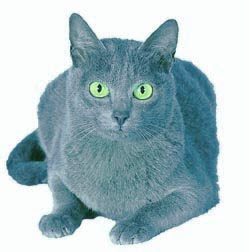Cats, for the most part, actively dislike getting wet - so why should the Turkish Van be any different?
These cats are auburn and white, but with a coat pattern very rare inc cats; the red colour is restricted to areas around the ears and on the tail. (This has come to be known as the Van pattern.)
Obviously swimming cats need to have a waterproof coat and the Turkish Vans have a semi-longhaired coat which requires some grooming. They moult extensively during the summer, assuming a virtually shorthaired appearance but throughout the year keep the beautiful brush-like tail.
They have a gentle disposition, a hearty appetite and are lively, intelligent and inquisitive with an ability to adjust easily to most situations. They maybe somewhat apprehensive with strangers but are very affectionate towards their owners, with whom they bond very closely - being almost doglike in their devotion.





















